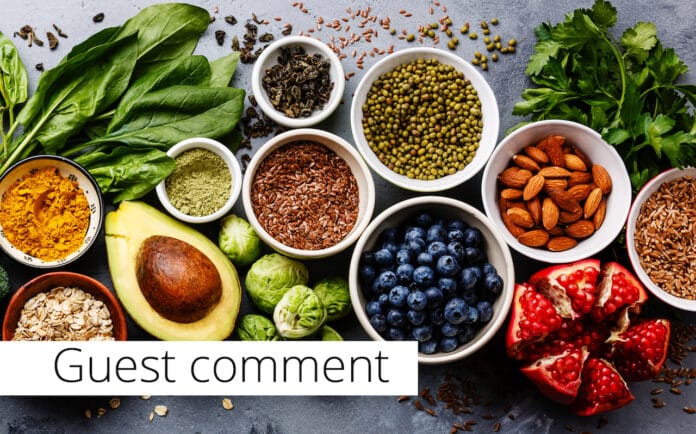There are many ways we can tackle environmental challenges, and a great deal of effort is put into emission reduction, energy efficiency and recycling. Food choices are starting to be considered important too, with choosing ingredients that are kinder to the environment being encouraged. But when sourcing ingredients how can you really tell if your purchasing decisions will make a difference?
Terms such as green, non-toxic, plant-based, plant-derived, pure, raw, healthy and all-natural lead us to believe the product is a better choice. But they are often used to greenwash; this happens when the claims are unsubstantiated, only refer to a specific aspect of food production, or are entirely false.
As demand for environmentally friendly products has risen, greenwashing has become increasingly common. So, what should consumers be looking out for? Here are five tips retailers can share with their customers.
- Is the claim vague?
Maybe a supplier uses very general terms such as ‘green’ or ‘eco-friendly’ but doesn’t provide any reason for their statement. Companies that are proud of their commitment to the environment will have the information behind their claims freely available and will happily answer consumer questions. Watch out for claims that are imprecise and have no evidence to back them up. Don’t be fooled by clever branding that makes a product look environmentally friendly when it has no right to be.
- Consider the whole life cycle of a product
As an example, a meat replacement product may major on the fact that it is plant-based, but what really counts is how those plants were grown and how much energy has been used in the processing of the ingredients to make the end product. A plant-based product that is revealed to have been produced from an international catalogue of ingredients that have all been intensively farmed isn’t as good for the environment as it initially sounds and certainly not as good as vegetables grown a few miles from your location.
- Certification
Researching the history of food products can be time consuming – something many companies rely on – but there is a growing number of sustainability certification bodies, such as B Corp, The Ethical Company Organisation, Planet Mark and FutureFit Business, that provide comprehensive assessments and certifications for companies that truly want to address their environmental impact. These organizations offer businesses a roadmap so they can measure and mitigate their social and environmental impact, with the end goal of reducing their contribution to climate change.
- Too good to be true?
When it comes to greenwashed products if it sounds too good to be true, there is a good chance that it is. Most sincerely green production practices are going to be lower yield and higher cost – so you should expect to pay more. A company that’s truly committed to reducing its carbon emissions is going to invest money in making changes to production and infrastructure to achieve this
In the last few years carbon offsetting has become very popular with large corporations which wish to appear more environmentally friendly, but sadly this isn’t a long-term solution to climate change. Sure, planting trees to suck carbon dioxide out of the atmosphere as they grow is a positive thing. But it’s significantly less positive than not producing so many greenhouse gases in the first place. Unfortunately, the buzz around carbon offsetting has been a distraction from the core problem which is skyrocketing carbon emissions. Offsetting schemes aren’t bad, but they don’t cancel out the emissions to which they are linked. Instead, it allows some companies to continue with their unsustainable behaviour while shifting their responsibility for the climate onto the consumer.
- Go local
One of the best ways to avoid greenwashing in food is to buy locally, from the people who produce it. Look out for farmers who are championing regenerative agriculture. As much as possible, ask questions about where your ingredients come from: where in the world are they grown, how many food miles have they travelled, and how have they been grown?











